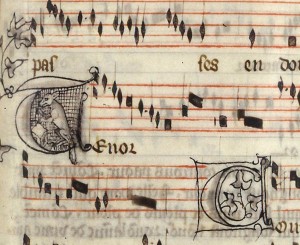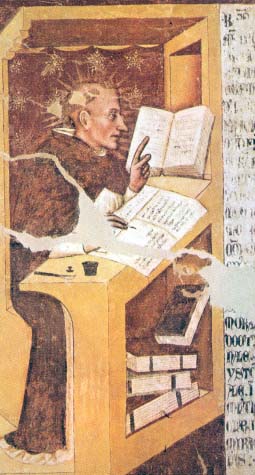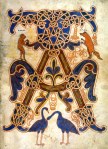Tags
Bibliothèque nationale de France, Books of Hours, Christianity, David Badke, Illuminated Manuscripts, Lists of Historians, Marco Polo, Natural Histories, The Golden Legend, The Physiologus

—ooo—
Introduction
I am providing you with a list of natural historians. There are other historians than those I have listed. Moreover, some of the authors of Medieval Bestiaries were historians. My sources are the Medieval Bestiary and Wikipedia.
The Contents of Natural Histories
Nature included not only animals, plants, flowers, but “the moon, stars, and the zodiac, the sun, the planets, the seasons and the calendar[.]” (Vincent de Beauvais). I have already noted that our humble calendars were cultural monuments. Jean de France’s Livre d’heures (Book of Hours) is probably the chief example of humanity’s need to chronicle its hours and the labours of the months. Les Très Riches Heures de Jean de France, Duc de Berry and the Book of Kells are genuine treasures. The beauty of the Book of Kells never ceases to amaze me. It is always new. As for Jean de France, Duc de Berry’s Livre d’heures, it is also an extremely beautiful book and it features the zodiac, thereby attesting to the continuity between “paganism” and Christianity.
The Testimonial of Explorers: Marco Polo
The authors of the Natural Histories relied to a large extent on the testimonial of earlier natural historians, which did not make for accuracy, but was acceptable in the Middle Ages. Predecessors were masters one strove to equal. Marco Polo‘s (15 September 1254 – 8–9 January 1324) Book of the Marvels of the World (Le Livre des merveilles du monde), c. 1300, was also a source for natural historians who lived during Marco Polo’s lifetime and afterwards.
Marco Polo, however, did not have a camera and it would appear that few artists accompanied him. His descriptions could therefore be edited. Discovering trade routes, the silk road, was a more important mission for him than cataloguing animals. Last September (2014), it was suggested that Marco Polo discovered America. (See The Telegraph.)
The Bestseller of the Middle Ages: The Golden Legend
Although Natural Histories listed mythical animals and much lore, I would not dismiss the accounts of the natural historians of Greece, Rome, early Christianity, and the Christian Middle Ages. Their books reveal various steps in our history. For instance, the bestseller of the Middle Ages was Jacobus de Voragine’s (c. 1230 – 13 or 16 July 1298) Golden Legend, which contained mostly inaccurate hagiographies (lives of saints). Although it was rather fanciful, it served as mythology and humans need mythologies. They need to trace their roots.
Claudius Alienus’ On the Characteristics of Animals is available in print: Book 1, Book 2. But it may be read online at Internet Archive (Book 1, Book 2, Book 3). So are other books. For my purposes, On the Characteristics of Animals (EN) was extremely useful. It is the natural history I used when I prepared my course on Beast Literature.


BnF, Manuscrits, Français 1584 fol. 478 (Renart sits inside an historiated initial.) (Photo credit: BnF)
Natural Histories
Among historians, we can name:
- Aelian (Claudius Alieanus) (c. 175 – c. 235 CE);
- Æsop’s Fables (620 and 560 BCE);
- Saint Ambrose (c. 340 – 4 April 397), Bishop of Milan;
- Augustine of Hippo or St Augustine (13 November 354 CE – 28 August 430);
- John Chrysostom c. 347 – 407);
- Gervaise (end of 12th century), Bayeux, a Bestiaire);
- Giraldus Cambrensis (Gerald of Wales, Gerald of Wales or Gerald de Barri) (c. 1146 – c. 1223);
- Guillaume le Clerc (early 13th century), Anglo-Norman, Bestiaire divin, written around 1210 or 1211);
- Hugh of Fouilloy (early 12th century), Anglo-Norman, Livre des Créatures, or Liber de Creatures, c. 1119, De avibus [birds]);
- Hugh of Saint Victor
- Hrabanus Maurus (c. 780-856), Archbishop of Mainz, De rerum naturis (On the Nature of Things), or De universo, an encyclopedia in 22 books, written between 842 and 847);
- Isidore of Seville (St. Isidore) (c. 560 – 4 April 636 CE), Archbishop of Seville, Etymologiæ;
- Lambert of Saint-Omer (c. 1061 – 1250), Liber floridus (“book of flowers”), Le Livre fleurissant en fleurs;
- Lucan (3 November 39 CE – 20 April 65 CE), Roman, Pharsalia (unfinished);
- Jacob van Maerlant (c. 1235 – 1291), greatest Flemish poet of the Middle Ages, Der Naturen Bloeme, a translation in Middle Dutch of Thomas of Cantimpré’s Liber de Natura Rerum;
- Konrad von Megenberg (early 14th century), Bavaria, studied in Paris, Das Buch der Natur, his source was Thomas of Cantimpré;
- Ovid (20 March 43 BC – 17/18 BCE), the author of the Metamorphoses;
- Philippe de Thaon (early 13th century), Anglo-Norman writer, Livre des Créatures, or Liber de Creatures;
- the author of the anonymous Physiologus;
- Pliny the Elder (23 CE – 24 or 25 August 79 CE), Naturalis Historia (mentioned below);
- Strabo (63/64 BCE – c. 24 CE), Greek, Geographica;
- Theophrastus (c. 370 – 285 BCE), Enquiry into Plants (9 books), On the Causes of Plants (six books) (Theophrastus will be discussed separately);
- Thomas of Cantimpré (early 13th century, Brussels), Liber de Natura Rerum (19 books in 1228, 20 books in 1244);
- Vincent of Beauvais (c. 1190 – 1264?), a French Dominican friar, Speculum [mirror] naturale. His Speculum Maius was the main encyclopedia used in the Middle Ages.

Bestiary.ca
My list is the Medieval Bestiary‘s list. It can be found by clicking on Bestiary.ca. The following authors are fascinating:
- Pliny the Elder (23 CE – 79 CE) wrote a Naturalis Historia, a History of Nature. Pliny died in the eruption of Vesuvius, on 24 August 79 CE. Accounts differ. Pliny the Elder may have been studying the eruption, but he was also trying to rescue friends. Pliny the Younger, Pliny the Elder’s nephew, wrote two letters on the eruption of Vesuvius that he sent to Tacitus. Pliny the Younger was a witness to the eruption of Vesuvius, but survived. (See Pliny the Elder, Pliny the Younger, and Tacitus, Wikipedia – the free encyclopedia.)
- Claudius Alienus (c. 175 – c. 235 CE) known as Aelian, is the author of On the Characteristics of Animals. Aelian, however, used written sources, one of which was Pliny the Elder’s Naturalis Historia. Aelian told how beavers castrate themselves to escape hunters. As mentioned above, Aelian’s On the Characteristics of Animals is an Internet Archive publication Book 1, Book 2, Book 3. (See Claudius Alienus, Wikipedia – the free encyclopedia.)
RELATED ARTICLES
- Allegorical Illuminated Manuscripts: the Medieval Bestiaries (20 February 2013)
- The Book of Kells Revisited (17 March 2013) ♥
- Books of Hours, a Rich Legacy (8 February 2013)
- Les Très Riches Heures du Duc de Berry (21 December 2012)
- Jacques de Voragine & the Golden Legend (6 February 2012)
- The Fitzwilliam Book of Hours (20 November 2011)
- The Book of Kells (18 November 2011)
Sources and Resources
- The Medieval Bestiary or Bestiary.ca (David Badke)
- Beast Index (David Badke) in Bestiary.ca
- Dogs, The Medieval Bestiary
- Aelian’s On the Characteristics of Animals is an Internet Archive publication. (Book 1, Book 2, Book 3).
- List of “naturalists” or historians who wrote Natural Histories: Bestiary.ca
My kindest regards to all of you.
—ooo—
Guillaume de Machaut – Complainte: Tels rit au matin qui au soir pleure (Le Remède de Fortune) (He laughs in the morning who cries when evening comes)



I’m so glad I read your articles. Again an excellent article, educational, of which I have much to learn. Thank you so much for sharing with us.
Have a wonderful weekend, dear Micheline. Love and blessings.
Big hugs, Ştefania.<3 🙂
LikeLike
Excellent post, dear Micheline… I truly enjoyed the reading, particularly the excerpt regarding Marco Polo. Thank you very much for sharing. best wishes, Aquileana 😛
LikeLike
Marco Polo needs a little more recognition. He was looking for trade routes, but as he did he also observed. One looks and suddenly one can link what seems not to belong together.
Thank you for your own superb blog.
Micheline
LikeLiked by 1 person
I just like the valuable information you provide on your articles.
I will bookmark your blog and check once more here regularly.
I am somewhat sure I will be informed many new stuff proper here!
Best of luck for the following!
LikeLike